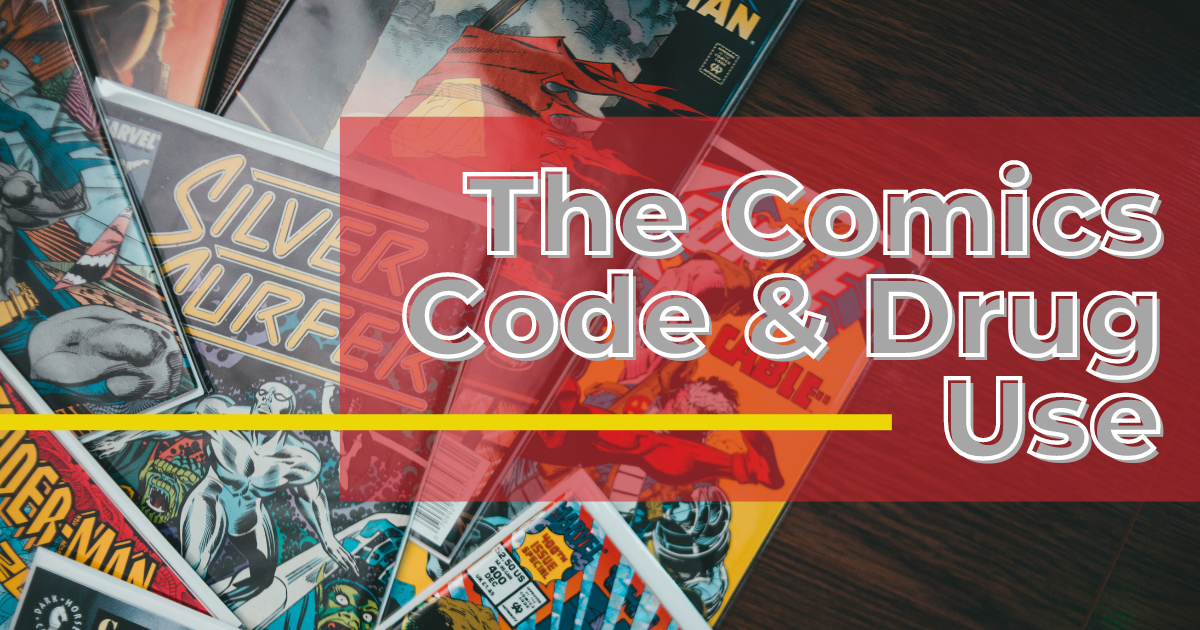The Comics Code Authority (CCA) was once a censoring organization that governed the content of comic books in the United States. The CCA was instrumental in creating the famous 1954 “Comic Book Code,” which was a set of rules that was intended to guide comic book writers in narrowing the scope of their art. The rules were revised in 1971 and 1989 in response to various changes, pushbacks, and controversies.
Story of the Comics Code
The code was formed in response to various moral panics around comic content in the 1950s. In 1954, a hyper-conservative psychiatrist published a book that argued comics were causing juvenile delinquency and moral corruption. As a way of maintaining the comic book publishing industry by self-censoring, the CCA was established that same year to allow the continuation of the art form without their work coming under scrutiny for “moral corruption.”
The code effectively governed the clothing and presentation of characters, the subject matter that comics could delve into, and the words used by writers in the comic books. This was to ensure there was a squeaky-clean, righteous image that the comics possessed, especially since a lot of the material was geared toward children. The CCA has been defunct since 2011, when DC Comics and Archie Comics (the last two comic book publishers that followed the code) broke from adherence to content rules.
Stan Lee Breaks the Mold to Discourage Drug Use
In the early 1970s, Stan Lee was approached by the U.S. Department of Health, Education, and Welfare to write a comic book story about drug abuse and addiction treatment. This would become one of the first major breaks from the CCA’s rules since its establishment. Lee decided that he would make a three-part Amazing Spider-Man special featuring the negatives of drug abuse as a deterrent to kids.
Even though the CCA refused to grant approval for the use of the seal on the comic book, Lee ran the comic anyways (with publisher approval). The comic was successful with audiences as an effective storyline with an anti-drug message. In the wake of the comic’s publication, the CCA revised their rules to allow narcotic depiction if it was depicted as a vicious habit. Not only was Lee advocating for ending the illicit use of drugs, but the CCA was made to look bad for denying the approval of a story that discouraged drug use.
In contrast to Marvel, the company that Lee published his comics through, DC Comics head Carmine Infantino said that DC wouldn’t do the same because it went against the code. Once the CCA decided to revise the rules, DC followed suit with a story that featured a superhero that suffered from an opioid use disorder and found help.
Other Recovery Stories in Comics
Between 1998 and 2000, Carol Danvers, also known as Captain Marvel, suffered from alcoholism. Danvers eventually went to an Alcoholics Anonymous meeting with Tony Stark, the top Marvel superhero known as Iron Man. Stark also battled alcoholism several times throughout his character’s timeline, including the notable series “Demon In a Bottle.” In one issue of a Marvel comic, Stark accidentally kills a diplomat at an event, and so he decides to feed a burgeoning alcohol use disorder instead of seek help for the trauma he suffered. The supervillain Bane experiences an addiction to a substance called “Venom” at one point, and then has an experience where he finds himself in recovery through abstinence from the substance.
Learn More
To learn more about how Landmark Recovery treats those suffering from a substance use disorder, give us a call at 888-448-0302 today. We’re on a mission to save a million lives by the end of the century. Our evidence-based, comprehensive treatment is designed to be maximally effective and target the root cause of addictions. Let us help you get your life back.

Choose Recovery Over Addiction
We're here 24/7 to help you get the care you need to live life on your terms, without drugs or alcohol. Talk to our recovery specialists today and learn about our integrated treatment programs.




